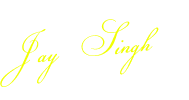 |
| The pen |
"If patience is worth anything, it must endure to the end of time. And a living faith will last in the midst of the blackest storm," - Mahatma Gandhi
"How poor are they that have not patience ! What wound did ever heal but by degrees?" - William Shakespeare
"It is easier to find men who will volunteer to die, than to find those who are willing to endure pain with patience." - Julius Caesar
There you have it, a few examples from the countless number of people who have spoken and extolled the virtues of patience and yet we find ourselves deeply immersed in impulsive and brash behavior. No matter how many articles are written, no matter how many talks are hosted and no matter how many times we fall, we keep repeating the same mistake of shoving aside our patience.
Even the sacred Bhagavad Gita speaks on patience in the following context:
"Patience is the opposite of anger. The nature of this world is that both good and bad things will happen to us. The proof of our spiritual advancement will not be that good and bad things don't happen to us, but that we react to these events properly and with even-mindedness."
However, in this post, I'll be talking about a tool/instrument which is present in almost every household and almost every school going child must have used. Yes, I'm talking about the fountain pen. Children were taught to use fountain pens to imbibe in them the important virtue of patience and help them in overcoming the problem of temper tantrums. On one hand, the fountain pens are messy, difficult to use, demand a lot of maintenance and a lot of ink and refilling but on the other hand, they carry within them a completely different art-form - calligraphy.
Although, it is not just the art-form, using a fountain pen is one of the most vivid memories of a child's upbringing. Remember the time, around 5th or 6th grade, when all children in schools were told to make the transition from the pencil to the pen. Children flocked to the stationery stores along with their parents to make their first purchase of a good fountain pen and then they would go about learning how to fill their pens with ink and carry the ink bottles to school too. The mothers would then have a tough task of cleaning the ink stained uniforms of kids and also removing the ink from their hands and mouth.
Although, it is not just the art-form, using a fountain pen is one of the most vivid memories of a child's upbringing. Remember the time, around 5th or 6th grade, when all children in schools were told to make the transition from the pencil to the pen. Children flocked to the stationery stores along with their parents to make their first purchase of a good fountain pen and then they would go about learning how to fill their pens with ink and carry the ink bottles to school too. The mothers would then have a tough task of cleaning the ink stained uniforms of kids and also removing the ink from their hands and mouth.
The process was messy but it disciplined the thought process and refined the handwriting of children. After poring over pages of cursive handwriting books, children eventually learned to write legibly and to appropriately space the fonts. Remarkably, the pen was able to also unleash a wave of creativity which could otherwise be wielded using a paintbrush. With the pen, words started flowing freely and steadily but art wasn't the only skill that children learnt. In the process of taking care of the pen and handwriting, it made our minds slow down, just enough for us to actually savor the beauty of words created on paper. Not only that, the pen forced us to think before we spoke or wrote anything, a very important quality necessary to be taught to kids. The pen, in many ways, resembled life and its various phases.
Just like maintaining the nib of the pen, it taught us to look after the key people in our lives.
Just like refilling the ink, it taught us to keep refilling our lives with the vital happiness needed for survival.
Just like the mess which the ink created, it taught us that life is messed up in a lot of ways, always try to straighten it up as much as possible with a smile on your face.
Just like the contact of the nib to paper. it taught us that we can touch the lives of many people in our lifetimes and leave an imprint upon them.
Just like the contact of the nib to paper. it taught us that we can touch the lives of many people in our lifetimes and leave an imprint upon them.

